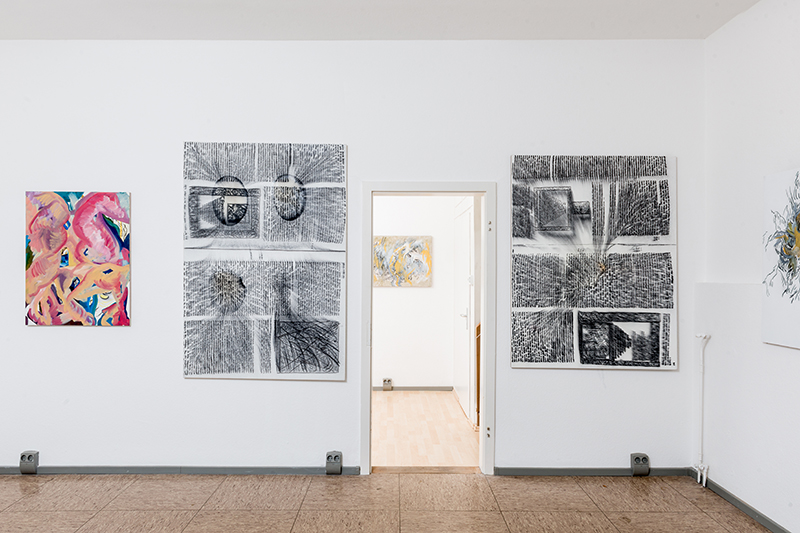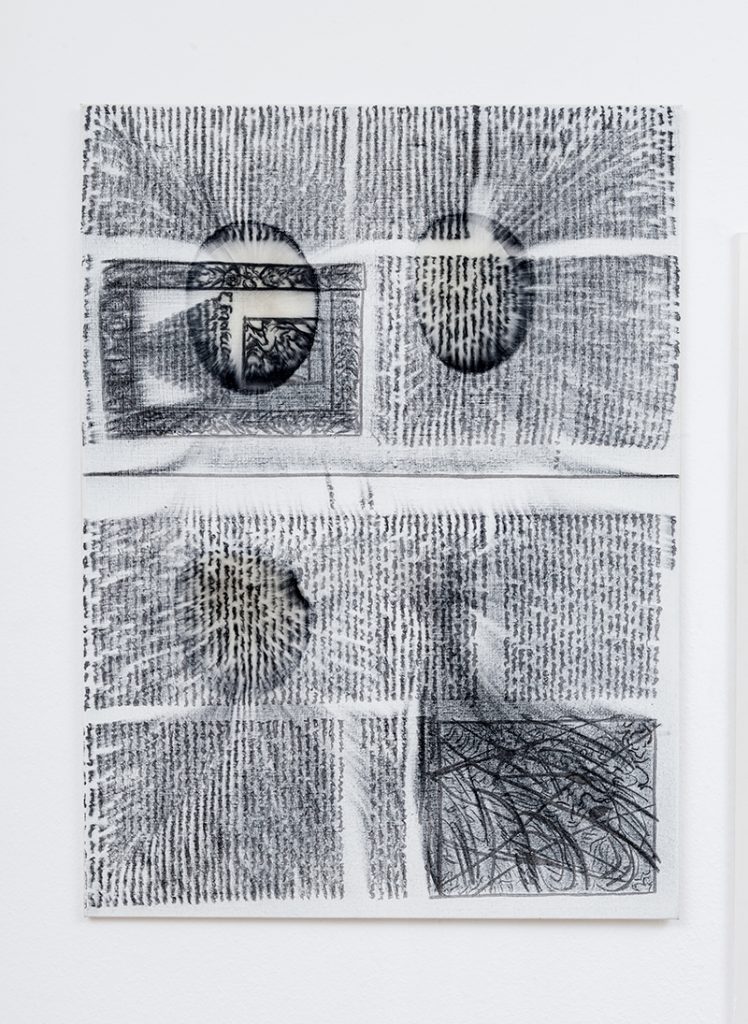The Rage of the Good Life
Exhibition: 28.12.2015 – 07.02.2016
Opening: 27.12.2015, 16:00
|
|
| Reprise (Érasme) 2014, acrylic and charcoal on canvas 146 x 114 cm
Sans Titre
Devine
Sans Titre
2015, charcoal, acrylic and oil on canvas Reprise (Texte n°2) Reprise (Texte n°3) Sans Titre Sans Titre Sans Titre Reprise (Max) Sans Titre |
|
Press Release:
When historians look back on this period, they might argue that the options presented to “the people” were mostly informed by stupidity. It was an idiotic period of time expressing a pent up part of modernity which rebounded back at society with some violence. Stupidity and rage are conditions that normally arise from suffering the long term effects of political depression. The object of desire – the “good life” is pressed out between splitting the hours of the day between money, family, painting and a raging nightmare.
It is funny and tragic that some intellectuals in the 90’s seriously thought that we were living the end of history (they were probably baby boomers). If the problems are so innate now, what are we to expect in 10 years from now? It’s no wonder that so many of us opt out. We don’t understand anymore the role of middle management politics and we have no idea what will be the consequences of our contemporary sociological and psychological profanities.
Psychoanalysis has a role to play here. It offered us more than a simple recollection of ideas and mass hysteria, and frankly, we have not taken the measure of the “subject re-positioning” that it implies. Somewhere down the line, we have lost a piece of the psychoanalytical discourse, and the only way to find it back is to reformulate it.
The idea of a subject which takes responsibility for their own discourse is the only way I know to not become collectively crazy. It is the only way I know to maintain a “good life” – in a more or less atheist materialist sense – to preserve the redemptive quality of language, a language constructed in this case under the tragic visibility of painting.
Pressetext:
Wenn Historiker einmal auf die heutige Zeit zurückblicken, würden sie vielleicht argumentieren, dass die Möglichkeiten, die dem “Volk” gegeben wurden, hauptsächlich auf Dummheit basierten. Es war eine idiotische Zeitspanne, in der ein Teil der Moderne, der sich lange aufgestaut hat, nach außen drückt und von der Gesellschaft als Gewalttätigkeit zurückgefedert wird. Dummheit und Wut sind Zustände, die sich normalerweise aus den Langzeitfolgen von politischer Depression entwickeln. Das Objekt der Begierde – das “Gute Leben” wird irgendwo herausgepresst aus den Stunden eines Tages, die auf Geld, Familie, Malerei und rasende Albträume verteilt werden.
Es ist amüsant und tragisch zugleich, dass manche Intellektuelle in den 90ern tatsächlich geglaubt haben, dass wir im Ende der Geschichte leben würden (sie waren wahrscheinlich Teil der Baby Boomer Generation). Wenn die Probleme so immanent sind wie jetzt, was sollen wir in 10 Jahren erwarten? Es ist kein Wunder, dass sich so viele von uns ausklinken. Wir können nicht mehr verstehen, welche Rolle die Politik einnimmt, die von all dem mittleren Management heute produziert wird, und wir haben keine Vorstellung davon, was die Konsequenzen unserer heutigen soziologischen und kulturellen Profanitäten sein werden.
Psychoanalyse muss hierbei eine Rolle spielen. Sie hat uns mehr geboten als eine einfache Erinnerung an Gedanken und Massenhysterie und, offen gesagt, haben wir die von ihr implizierte Maßnahme der “Neupositionierung des Subjekts” nicht angewendet. Irgendwo im Lauf der Zeit haben wir ein Stück psychoanalytischen Diskurs verloren und die einzige Möglichkeit es wiederzufinden, ist, es anders zu formulieren.
Das Konzept, dass ein Subjekt die Verantwortung für den eigenen Diskurs übernimmt, ist der einzige Weg, den ich kenne, um nicht kollektiv verrückt zu werden. Es ist der einzige Weg, den ich kenne, ein “Gutes Leben” aufrecht zu erhalten – auf eine mehr oder weniger atheistisch-materialistische Weise – um die erlösende Eigenschaft der Sprache zu bewahren, eine Sprache, die in diesem Fall unter der tragischen Sichtbarkeit von Malerei konstruiert wurde.
















